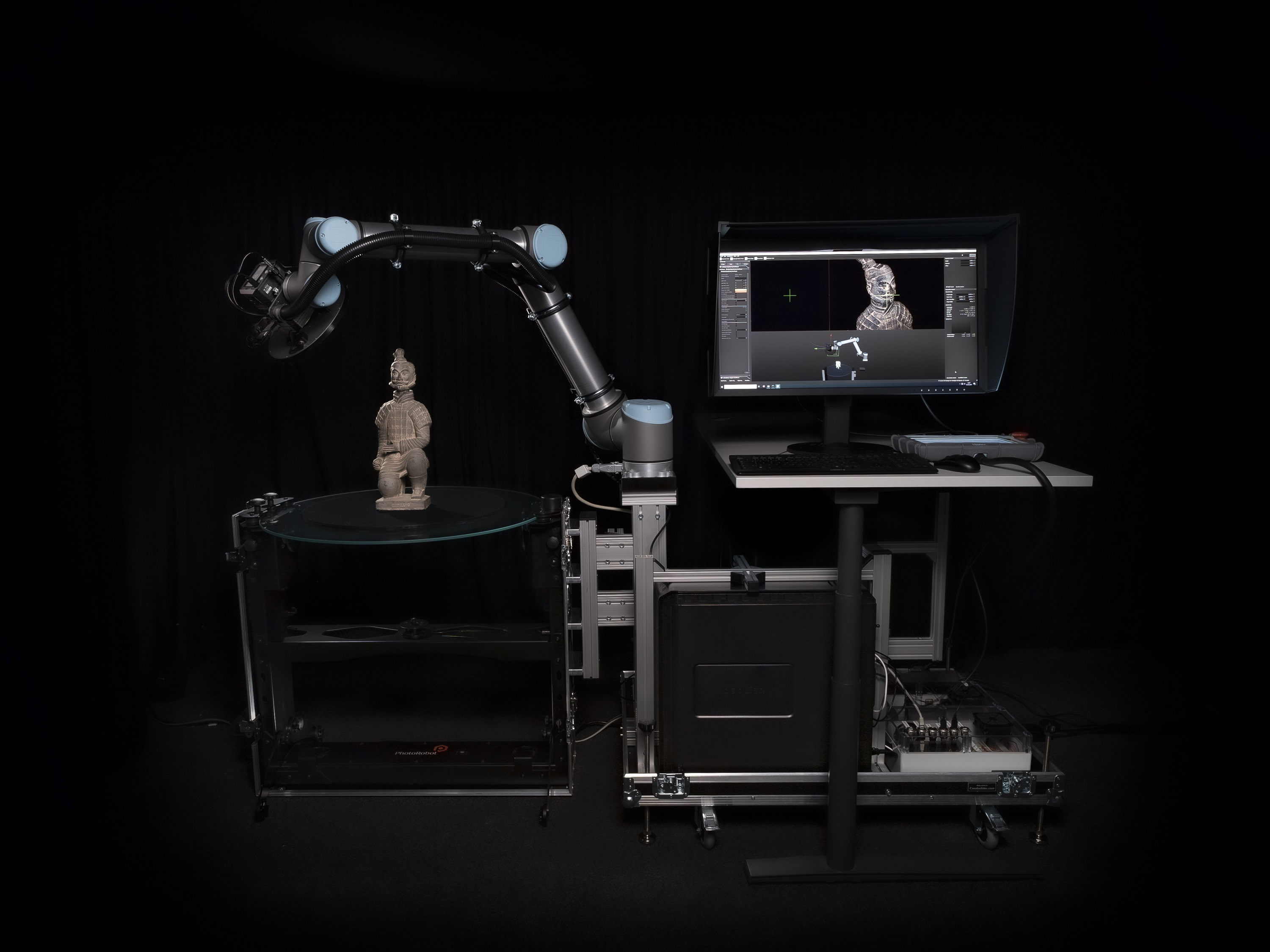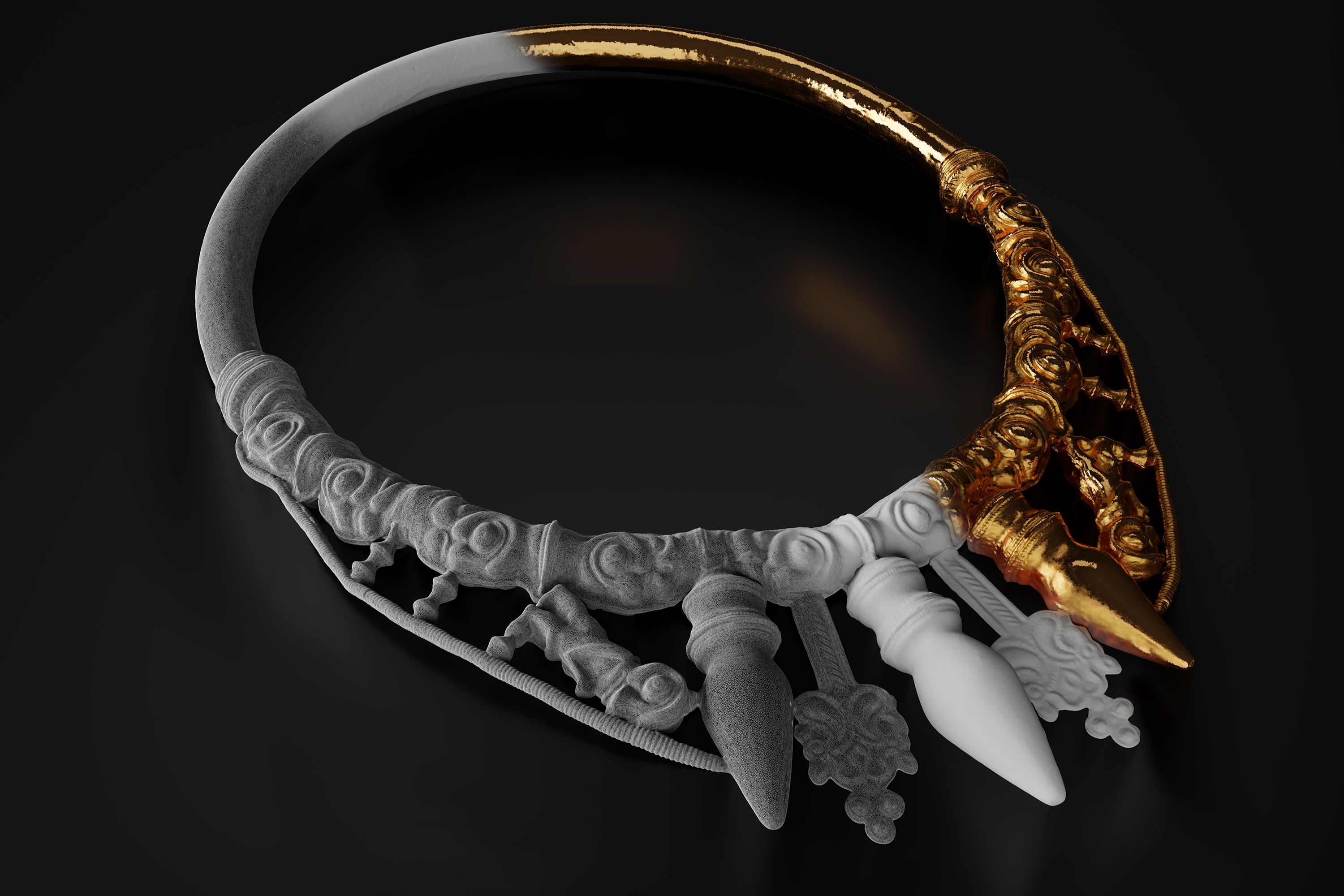
DARMSTADT, 23-Feb-2021 — /EPR INTERNET NEWS/ — The Fraunhofer IGD in Darmstadt has developed a product to make it easier for museums to digitize their collections and is now cooperating with Danish camera manufacturer Phase One. The mobile scanner CultArm3D delivers precise 3D models of exhibits of various sizes at the push of a button.
Creating a virtual representation of a collection brings not only benefits to museums and exhibits when visitors are facing closed doors and must resort to virtual exploration: “3D models are tremendously important for research and can help improve our understanding of objects and their origins as well as analyze their attributes. They also serve as the basis for visualization in virtual and augmented reality, and when using 3D printing to create true-color physical replicas,†explained Pedro Santos, department head at the Fraunhofer Institute for Computer Graphics Research IGD. For several years, his team and he have worked with large-format 3D scanning technology, especially in the digitization of cultural objects. Since none of these objects is like the other, this task is particularly challenging. Through many discussions with museums, it was clear that the 3D digitization of entire collections demands results of the utmost quality along with a system that is easy to operate and mobile yet still secure.
High-resolution and true-color 3D scans to standard
The product of the cooperation between the German research institute and the Danish camera manufacturer is the CultArm3D robotic arm. Equipped with a Phase One iXG 100-megapixel camera, Fraunhofer IGD’s autonomous scanning algorithm and specially developed ring lights for optimal illumination, it automatically scans objects from every angle and generates detailed, high-quality 3D representations in the blink of an eye. This is important because the virtual models must be good enough for scientists to analyze them as they see fit and compare them to models of other objects, which fragile originals would only permit or be able to withstand under certain circumstances.

The developers at Fraunhofer IGD paid special attention to objects with challenging surface geometries, such as shiny or reflective objects made of gold or bronze with complex occlusions. All established standards and international recommendations were followed with regard to not only system calibration (based on ISO/TS 19264 and VDI/VDE 2634) but also object metadata and digital model data (based on Europeana Data Model, 3D Task Force and CARARE), which ensures reproducible high quality in terms of geometry, textures, and color a first on the market.
Safe and simple operating concept
The scanning arm is easy to operate and can be done by museum staff without supervision. The built-in software guides the user through a quick calibration process during initial setup that only needs to be done one time when the system is first started. The only thing to do then is to place the objects in the middle of the included rotary table and press a button to start scanning everything else is fully automated. The museum also need not worry about its valuable exhibits: The design includes various safety precautions proven in the industry for protecting the objects being scanned. One example is a feature that automatically locks the joints of the scanning arm in place in the event of a power failure.
Automated workflow
A quick preliminary scan establishes a basic grasp of the size and shape of the object. Dynamic viewpoint selection during scanning ensures that every detail of the object visible to the sensor is captured in true color and with optimal definition in the fewest number of images. Even challenging, reflective materials and complex geometric occlusions on the surface are captured. For reflective surfaces, this eliminates the need to use a mattifying spray to capture their geometry. For complex object geometries, manual postprocessing of the 3D models is minimized or usually completely eliminated. The dynamic viewpoint selection continues until the user-defined quality targets for minimal coverage and resolution are achieved. The final 3D model can then be output in various formats, such as in high-resolution 2D or 3D video, as a 3D web model, for virtual and augmented reality presentations, or as a print file for a 3D printer. All established standard 3D formats and many other output formats are supported.
Scalable and mobile
There are two models of the CultArm3D for objects up to a meter tall and weighing up to 60 kg. Larger scan volumes and weights can be supported on request. The scanning arm is mobile, and its light weight makes it easy to transport. When on site, all it needs is a regular power supply, allowing it to scan collections at various locations.
3D scanning technology already in use
Earlier development stages of the scanning arm are already in use at museums and archives, including the State Museum of Baden in Karlsruhe, the Thuringian University and State Library at Friedrich Schiller University Jena and, soon, the University and State Library Darmstadt. In Karlsruhe, the Fraunhofer IGD scanner has been integrated into the visitor concept, allowing guests to scan museum objects in 3D under supervision and then see the results of their work for themselves on interactive touch tables or with VR glasses.
It has already been evaluated and used at The Getty in Los Angeles, the REM in Mannheim, the Museumslandschaft Hessen Kassel (MHK), the Saalburg and the Keltenwelt am Glauberg, where a wide array of collections was digitized in 3D. The feedback from these applications gave the developers valuable tips for improvements. Interested museums can contact Fraunhofer IGD directly for cooperation. Aside from installing the CultArm3D, all staff will be given an extensive introduction and on-site training. The overall package is rounded out by online documentation that is continually kept updated. A sales channel through Phase One is planned for 2022.
More information:
Videos of the CultArm3D in operation and a presentation of scanned objects:Â https://www.cultarm3d.de/
Everything on 3D scanning research at Fraunhofer IGD:Â https://www.igd.fraunhofer.de/en/competences/technologies/3d-scanning
SOURCE: EuropaWire
